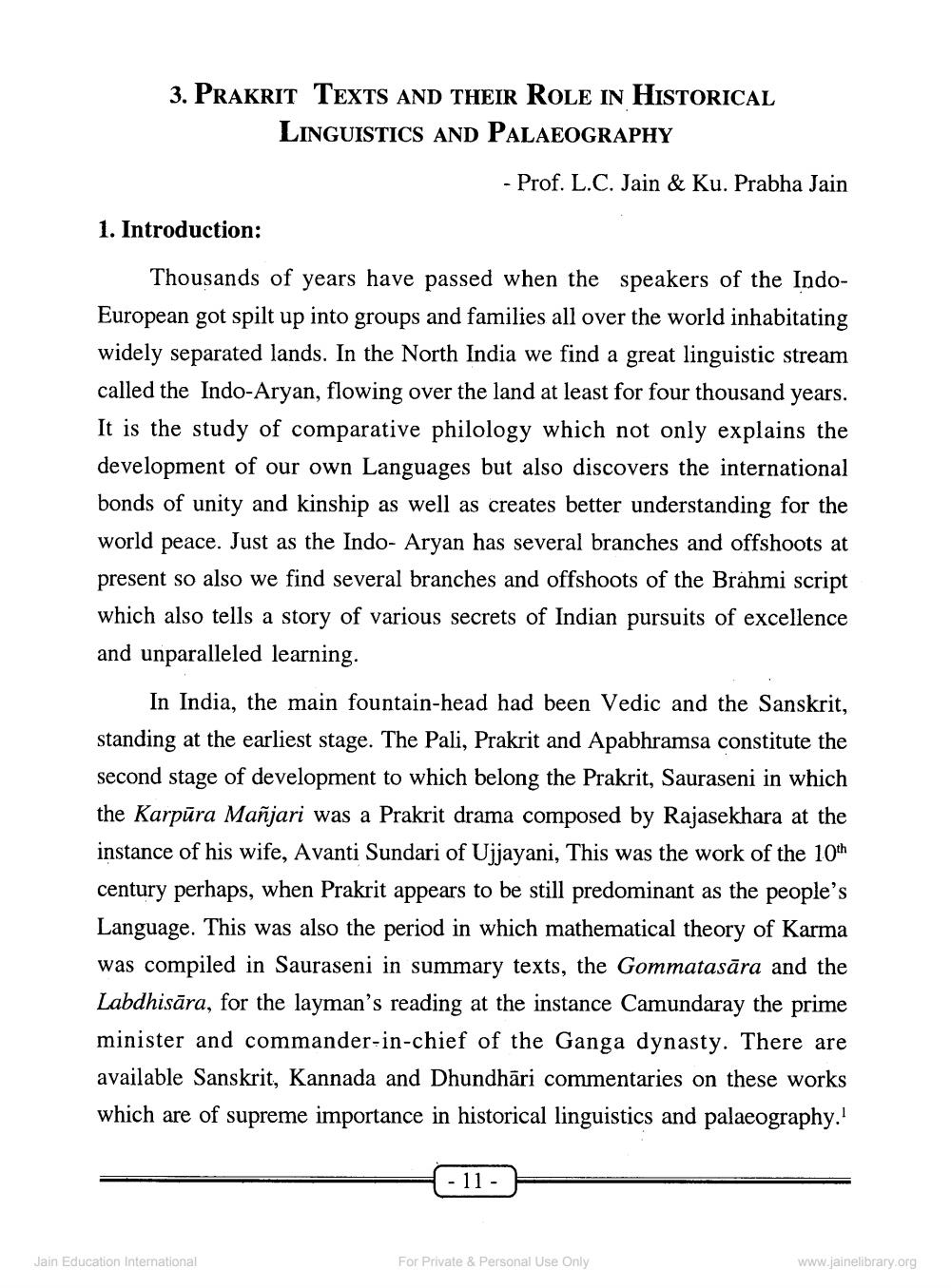________________
3. PRAKRIT TEXTS AND THEIR ROLE IN HISTORICAL
LINGUISTICS AND PALAEOGRAPHY
- Prof. L.C. Jain & Ku. Prabha Jain
1. Introduction:
Thousands of years have passed when the speakers of the IndoEuropean got spilt up into groups and families all over the world inhabitating widely separated lands. In the North India we find a great linguistic stream called the Indo-Aryan, flowing over the land at least for four thousand years. It is the study of comparative philology which not only explains the development of our own Languages but also discovers the international bonds of unity and kinship as well as creates better understanding for the world peace. Just as the Indo- Aryan has several branches and offshoots at present so also we find several branches and offshoots of the Brahmi script which also tells a story of various secrets of Indian pursuits of excellence and unparalleled learning.
In India, the main fountain-head had been Vedic and the Sanskrit, standing at the earliest stage. The Pali, Prakrit and Apabhramsa constitute the second stage of development to which belong the Prakrit, Sauraseni in which the Karpūra Mañjari was a Prakrit drama composed by Rajasekhara at the instance of his wife, Avanti Sundari of Ujjayani, This was the work of the 10th century perhaps, when Prakrit appears to be still predominant as the people's Language. This was also the period in which mathematical theory of Karma was compiled in Sauraseni in summary texts, the Gommatasāra and the Labdhisāra, for the layman's reading at the instance Camundaray the prime minister and commander-in-chief of the Ganga dynasty. There are available Sanskrit, Kannada and Dhundhāri commentaries on these works which are of supreme importance in historical linguistics and palaeography.
11.
Jain Education International
For Private & Personal Use Only
www.jainelibrary.org




